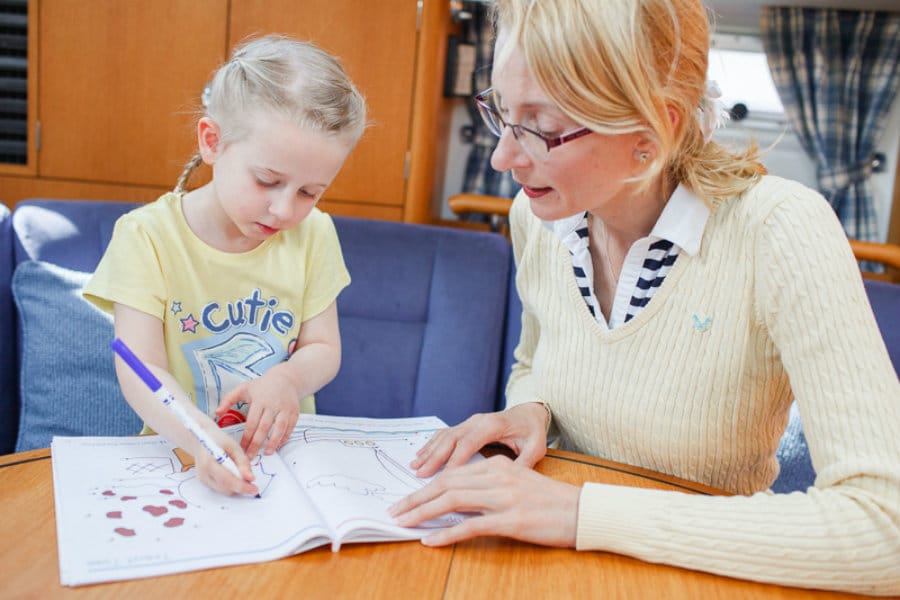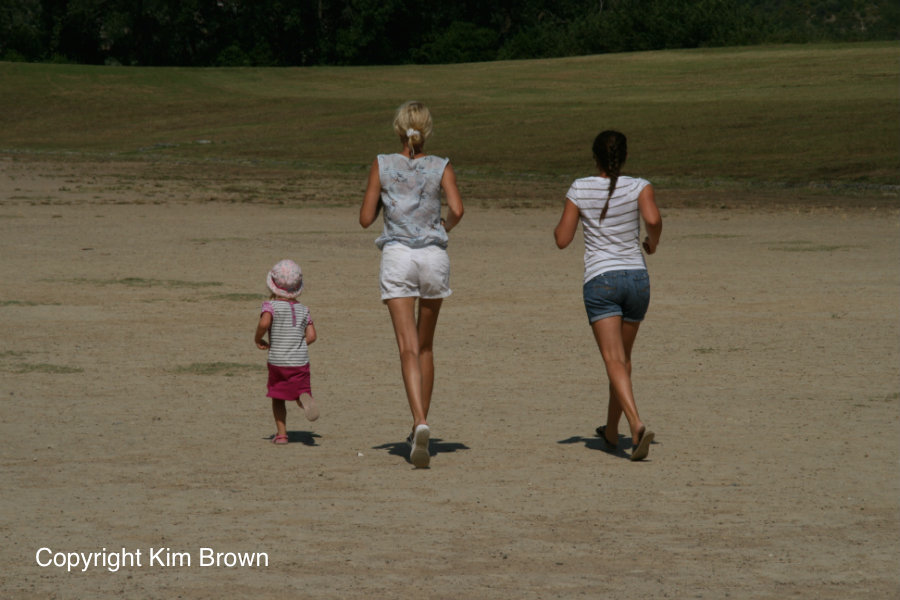The other day a newbie cruiser called me a ‘veteran’ to the cruising life. After 1 ½ years of living on our sailboat in the Mediterranean full-time the last thing I feel like is a veteran. Things have certainly changed – both my husband and I have gained more confidence and we feel more comfortable with our boat and the sea, however, we still feel like new kids on the block!
I wonder if and when we’ll ever feel like ‘experts’ from a cruising perspective?
Once I read in a magazine that it takes at least three years to feel ‘at home,’ when you move to a new location. Perhaps it’s the same with moving onto a boat? Who knows? (I’ll have to let you know in another 1 ½ years!)
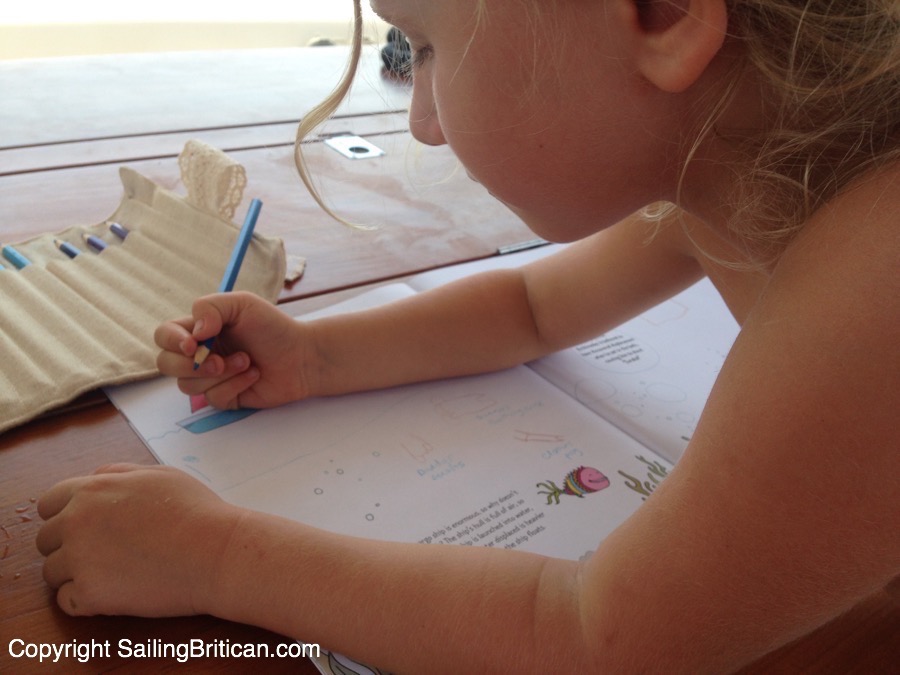
Sienna doing educational work in the cockpit
Regarding my daughter, Sienna, things have certainly advanced in relation to our homeschooling efforts. Quite a few of my readers write me asking how Sienna is doing and/or explain that they’re considering the idea of moving onto a boat but worry about their child’s education.
This article is therefore an update as to where we are, what we’re doing and how the whole concept of homeschooling on a boat is going.
Sienna is only five years old right now but regardless to her age our approach will most likely be very similar up into her teens (if we’re still sailing then)! Ultimately boat school becomes a mix of traditional education (reading, writing, math, etc.), theme-based education (learning about something of interest) and life-based education (learning by default due to the child’s surroundings).
If nothing else, this article should reduce any fears that a potential boat family might have. Taking our daughter out of school and traveling around the world, by boat, has made a massively positive impact on our daughter’s ability to learn. Not only does she comprehend academic principles, she also has a high level of confidence and the ability to openly converse with young children, the elderly and anyone from any background, nationality or religion.
How did we approach homeschooling when we first moved onto the boat?
Last August I wrote an article entitled, How I’m homeschooling my daughter while sailing around the world – an example, outlining our relaxed approach to Sienna’s education.
During our first year of full time cruising, my husband, Simon, and I approached our daughter’s education in a very lenient manner. If Sienna, age 4 at the time, expressed an interest in something like trees we’d find videos (on YouTube), research tree arts & crafts, look up an educational app and search for any educational resources.
This happened a couple times a week. Some of Sienna’s interests included snakes and venom, ghosts, volcanoes, dolphins, dinosaurs, princesses, pirates and of course ‘Hello Kitty,’ and anything to do with Disney’s ‘Frozen’.
We also worked on letters and numbers. Whenever there was an opportunity to recognize a letter or count something we would work it into our day. I tried to get Sienna to practice handwriting using an educational workbook but she became very upset when making mistakes. After a while, she’d just avoid doing the books or get flustered when she failed to stay on the lines when tracing. I assumed that, perhaps, I introduced a skillset that she wasn’t ready for and decided to come back to it at a later date.
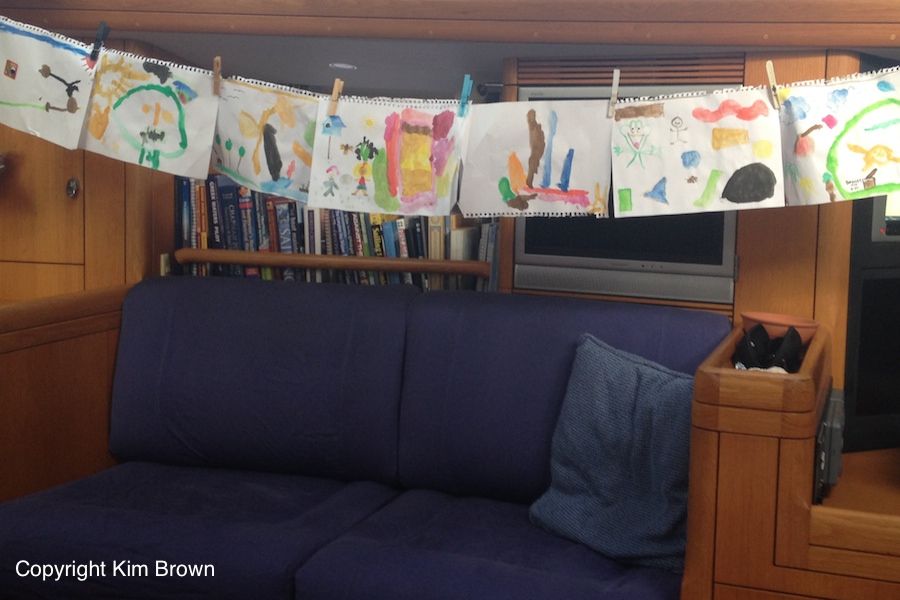
Sienna’s artwork clothesline when she was four. Now that she’s five there are more letters and numbers
Aside from making an effort to actively teach, Sienna learned by default.
During our travels she gained an amazing education about the history, language, culture, people, sights and food of Italy and Greece. She also gained a glimpse into these same things in Gibraltar, Algeria, Malta and Turkey. In many respects we didn’t have to work at teaching Sienna – it just happened as a matter of course and I’m sure that will continue.
To give you an example of something that Sienna learned by default, let me describe her experience with volcanoes. While sailing and living in Sicily and Italy, Sienna climbed one Volcano (Mount Etna), watched another erupt (Stromboli) and saw the ruins that a third volcano destroyed (Seeing Pompeii and Erocolano at the base of Vesuvius). Read: Sailing along the southwest coast of Italy: Reggio, Vibo, Cetraro, Sapri, Salerno and Capri.
In addition to experiencing volcanoes, we watched some YouTube videos of eruptions, investigated what’s going in inside the Earths crust using science books that we have on board and searched for more information on the Internet. We also created a do-it-yourself volcano on the boat using baking soda and vinegar (science)!
Volcanoes are just one subject that started off by default and was then supported by additional resources.
If you considering the local food, history, geography, people, music, tradition and, and, and that Sienna has come in contact with there’s actually no way to truly quantify or qualify her exact level of knowledge. Like any other child, she’s a sponge and is absorbing a wide variety of stimulus. Fortunate for her, she’s having the amazing privilege of seeing the world.
But recently we’ve decided to up our game considering our homeschooling efforts.
If there’s one thing I’ve learned about living on a boat it’s the concept of going with the flow. I know that sounds cliché but if you don’t go with the flow on a boat you’re going to hate being on a boat!
What do I mean by that?
Well…you have very little control concerning voyages. You can’t control the weather and more times than not, the weather forecasts are inaccurate. Sometimes they’re very inaccurate! You can set off from destination A and head to B but often you’ll end up in C or D.
You have to always have enough food on board in case you can’t find a market for several days. You can’t ensure you’ll find an Internet connection in a bay or even when taking the dingy to land. Nothing is certain and plans have to change all the time. If you’re actively going to sail around an area or the world you have to get used to letting the world tell you what you’re doing to do rather than the other way around.
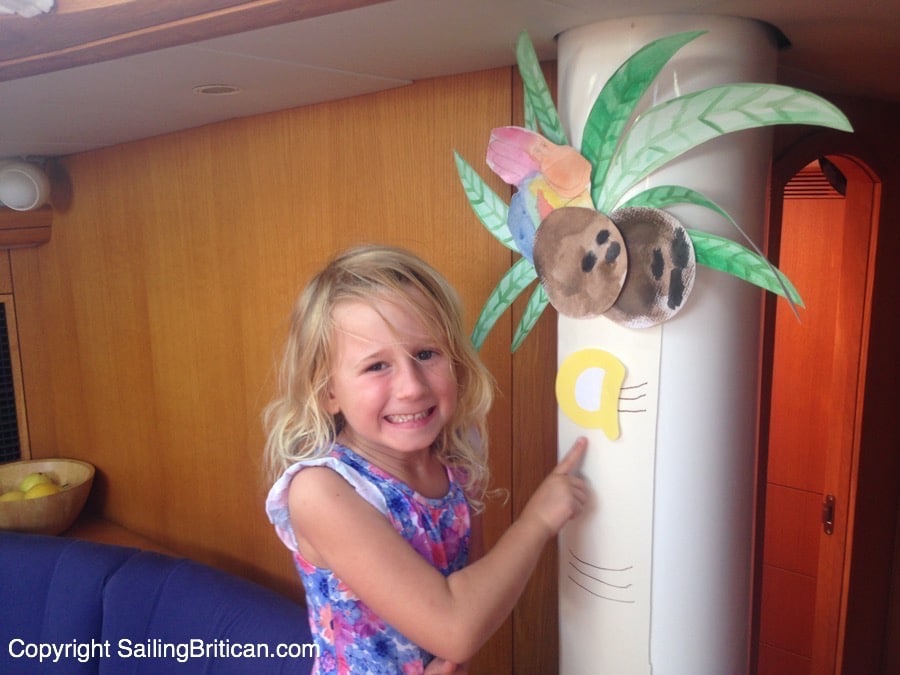
Sienna’s coconut tree – each week we add a new letter.
Concerning flow and Sienna’s education I noticed that she had a huge capacity to learn whatever she was interested in but failed to show an interest in basics like letters and reading. I attempted to use a ‘learn to read’ app on the Ipad to introduce sounds but Sienna became very discouraged because she couldn’t understand what was going on.
After repeated attempts to work on letters and reading I realized that the core things regarding homeschooling were not flowing.
I had hit a wall and needed to change course.
Furthermore, back home in England and America, Sienna’s friends were entering school, learning the basics and achieving milestones. When I read on Facebook that Sienna’s good friend Harry was already reading, I felt a bit concerned. Sienna could recite the alphabet and recognize many letters but we were a long stretch from reading.
In some cases I think that the education system pushes too much on kids too soon. Of course, there are some bright children that are capable of reading at the age of four and they should be encouraged, but there are those that don’t learn to read until they’re six or seven. A couple teachers told me that each child eventually seems to just ‘get it’ and it’s a skill that can’t be forced.
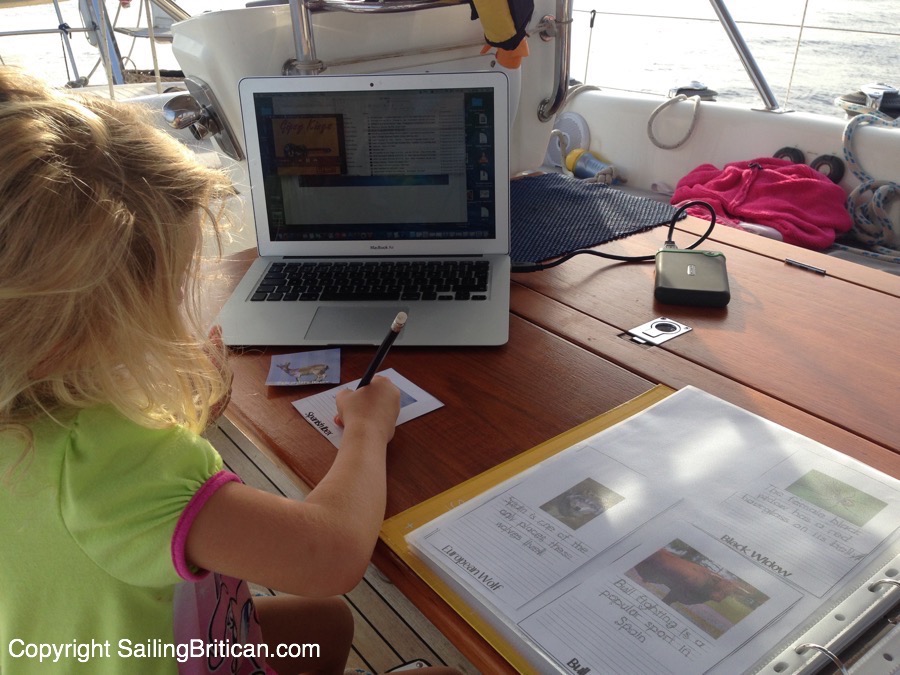
Sienna working on her more organized homeschooling system.
Needless to say, I felt the time had come for a more regimented homeschooling approach.
Rather than winging it, I wanted to create a weekly routine to build up the basics but also allow a lot of time for exploration of Sienna’s interests. And not having a background in teaching I had no idea on where to start or how long to work on a particular item. For example, I didn’t know if I was suppose to spend one day on a letter or perhaps a week?
While we were still sailing around Sardinia (an Italian island off the west coast of Italy) and had an Internet connection from our boat (a massive luxury), I searched the Internet for some ideas on how to get started with a more organized system for homeschooling.
I watched a few YouTube.com videos, read some blogs and looked at online and offline homeschooling programs.
To my dismay I couldn’t find one solution that would work for full time cruising live aboards. Living on a boat presents quite a few problems regarding homeschooling. Let me explain the issues I came up against:
1. Correspondence type homeschooling. This is an option where you have educational work and lesson plans sent to you and then you send the child’s work back to the ‘school’ for evaluation. Living on a boat, we have no set location so getting things sent to us is often a logistical nightmare. Even if we can get something sent to a marina that we might be near in the future, the costs of delivery can be prohibitive. So – any kind of correspondence system seemed a bit to onerous. Furthermore, if we can’t get to the location we had the package sent to, we have to arrange for it to be sent somewhere else. Also, we’ve had so many issues with having items sent from America to Europe – in many cases we’ve never received parcels due to some kind of customs issue. Considering that we’re sailing around the world, I didn’t see this kind of option working for us.
2. Internet based homeschooling. These systems can be helpful but we often don’t have an Internet connection. When we first started sailing I purchase a subscription to ABCMouse.com (and still have it) but Sienna cannot use it regularly. It’s only when we’re at a marina that provides good wifi or if we can pick up a connection from a bar/restaurant in a bay that she can use it.
3. Whole curriculum offerings. There are companies that will ship you all the workbooks, reading books and all sorts of ‘packages’ that give you everything you need to use to teach a child for a curriculum. For the most part I found these offerings to be extremely expensive (some into the 1000’s). So, the cost is one issue but more importantly, we simply don’t have the room to store everything Sienna would need for a years worth of schooling. Furthermore, when we’re done with a learning module we need to get rid of it to make space. When you live in a house, you have bookshelves and a variety of rooms to store your child’s work…but on a boat you simply don’t have that luxury.
4. Homeschooling lesson plans, supporting materials and external resources. After searching the Internet I found a few websites that offer module type homeschooling lessons – you can purchase a module like learning letters that can be downloaded in one go and then add an Art lesson or a Science lesson. This has been the most helpful to me thus far HOWEVER, the lessons provided require massive amounts of print-outs (finding printer paper or printer cartridges can take months), external resources that cannot easily be obtained and reference to educational elements on the Internet (that we can’t access when we’re at sea).
So…when living on a boat these are the core issues:
– No fixed address or easy method to receive or send correspondence or educational materials
– Lack of internet connection and most often if there is a connection it’s not very good
– Lack of space to hold too many learning resources at once
– Having the ability to print vast amounts of print-outs
That being highlighted, what I’ve done is to create my own homeschooling method using a variety of resources. The ‘core’ however that I started with comes from the ‘Confessions of a homeschooler,’ website.
On offer is a pre-K/Kindergarden/1st year system called ‘Letter of the Week’. With this system, you can download lesson plans for each week, print outs for each letter (includes dot-to-dot, coloring pages, matching, counting, cut and paste, sewing cards, and so forth).
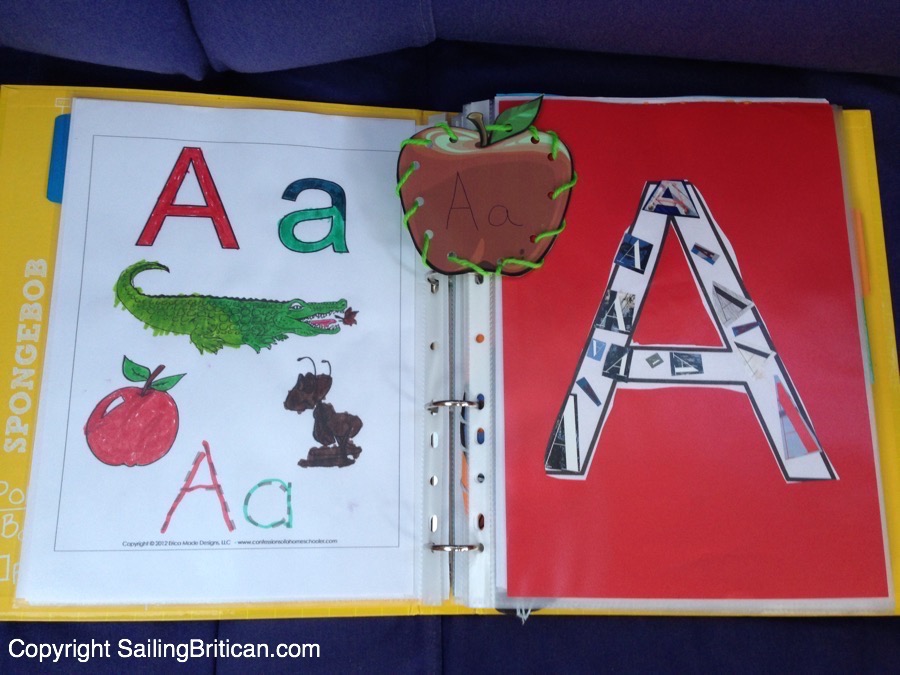
Print outs from Confessions of a Homeschooler website.
Each week the lesson plans include songs to sing, one new letter, a new number and a new shape.
Additionally, the creator of the system recommends books to read (many that can be downloaded to a Kindle), songs to sing (that can be downloaded from Amazon) and links to online references.
Aside from learning the letters, numbers and shapes, there’s a ‘Daily Learning Notebook,’ where the child fills out the date on a calendar, records the weather, writes the time and temperature and there’s even a body to scribble over to record what to wear for the day.
Many of the learning sheets can be inserted into plastic covers and a wipe board pen can be used and then cleaned off day after day. That’s perfect for a boat!
Each week I pick and choose items from the letter pack because I simply can’t print 30 to 40 sheets every week. In some cases I use something I already have or create something in its place.
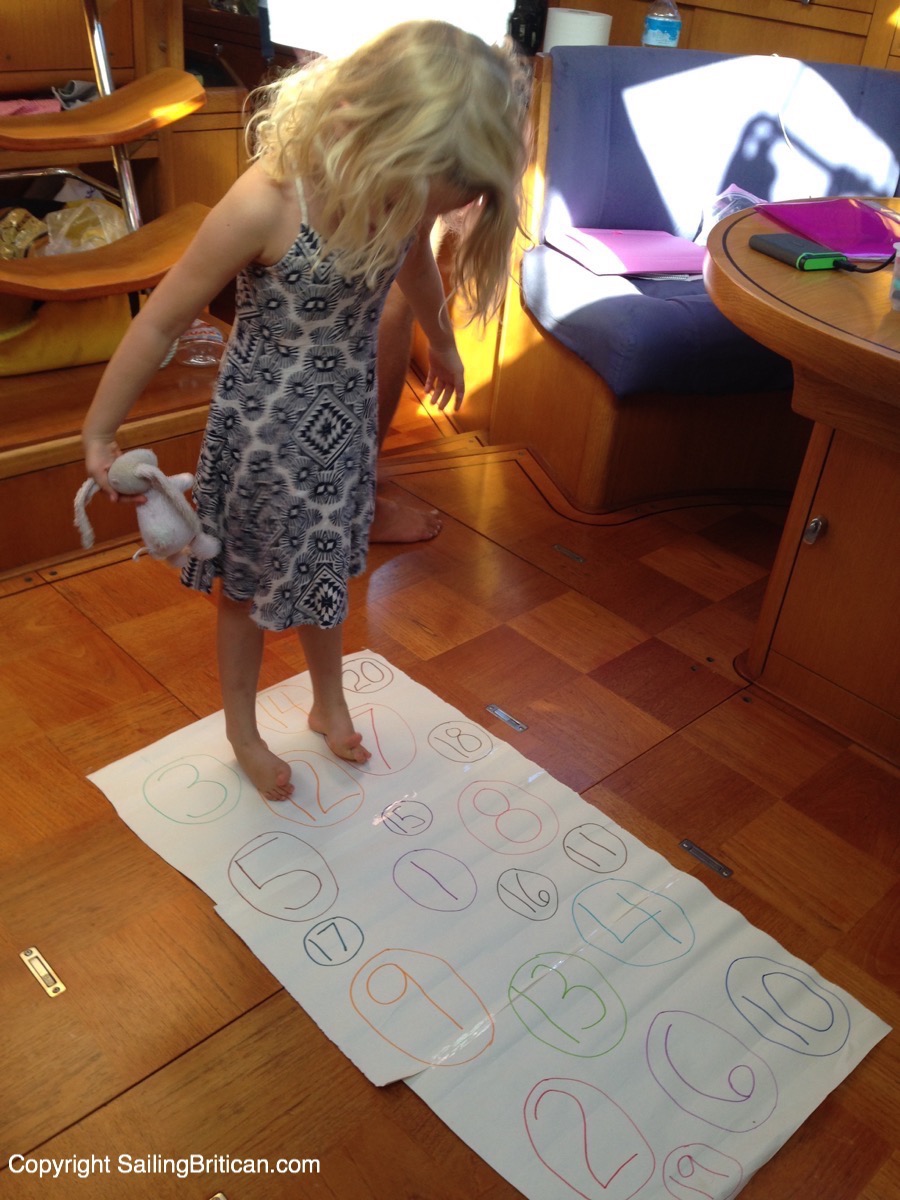
My creation based on the Confessions of a Homeschooler’s game.
Let me give you an example. There’s a game you can play where you put print outs of each number on the floor. So imagine a page each for the number 1 through 10 on the floor. You then you say a number and have your child stand on the number. The author has a similar game for continents – Asia, Africa, North America, etc.
It’s a brilliant idea and works well, but I can’t print out 10 color pages every week to fit with the weeks theme so, I took one big piece of paper, wrote 1 – 20 on it and I simply have Sienna step on the number. I use the same paper every week.
In addition to doing the ‘Letter of the Week,’ system I also purchased the Earth module from the same website. Considering that we’re travelling the world I felt that it would fit in perfectly. This module is excellent! The child gets a passport to check in and out of countries and as we travel to different countries I use the module of the country that we’re in.
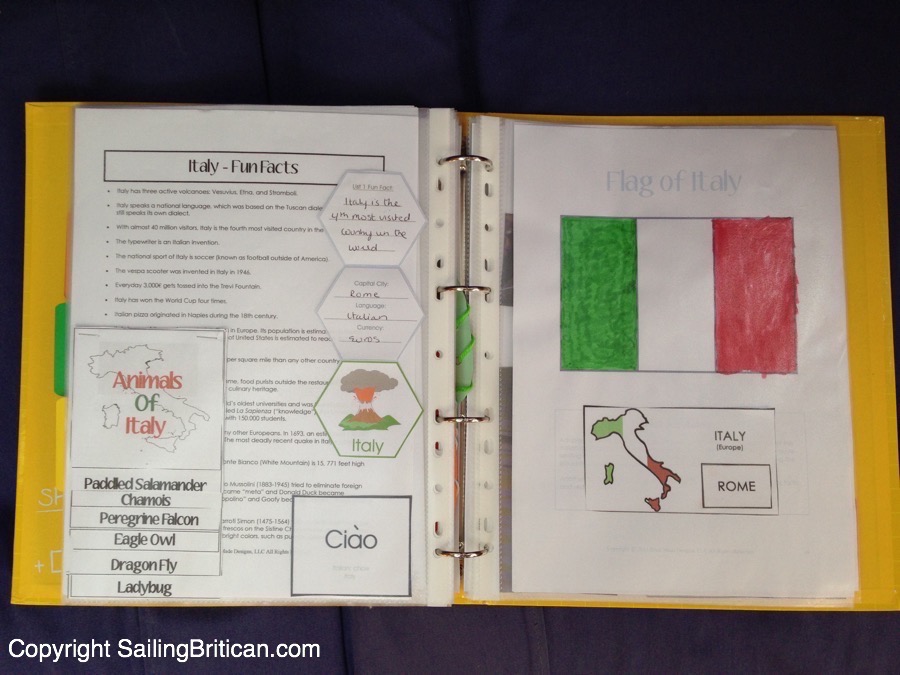
The Earth module offers print outs for the flag of the country, lists interesting facts, provides a mini book and other activities to fill out. Furthermore, there are reports that can be filled out and even quizzes. The Earth module also came with an Animal pack so while learning about the country we’re in, we’re also learning about the animals in the country.
The great thing about the Earth module is that a child from 4 to 14 could use it. It gives you a basis to build upon. Some of the books recommended for the module I found on Kindle so I was pleased to have them instantly. Other books are in hard copy only but I’ve ordered them and will pick them up in a marina that I know we’ll be stopping in. Getting one off deliveries isn’t an issue when shipping within Europe.
In addition to using the Earth module, I also printed a map of the area we’re in and work with Sienna to put a dot and a memorable picture of all the places we stop. Furthermore, when I find Internet, I use an app called ITunesDownloader that allows me to download anything from YouTube.com and watch later.
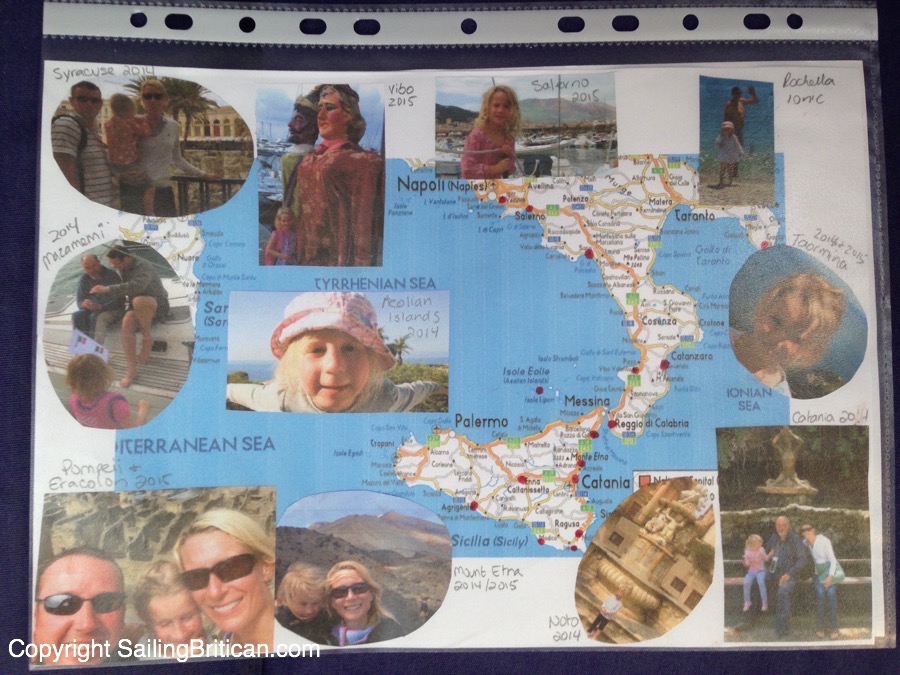
So…when I find a café with good Internet, I first download a video on all the animals we’ll be learning for the week. Often they’re just 5 to 10 minute clips but on occasion I’ll find a full documentary. Just last week we watched and incredible hour long show about the European Wolf.
After the animals I’ll then find traditional music for the country (for Italy it was Opera and for Spain, I downloaded the Gipsy Kings), I’ll get something on an artist or two (Italy was Michelangelo and Spain I downloaded a video and an art class on Picasso). And since we all love food, I also download a video of a traditional dish for the area and anything else that seems relevant.
While searching YouTube for Spanish explorers I found a full hour long movie on Christopher Columbus and Sienna was thrilled to watch it. One day we were talking about clouds, so once again, I’d look at YouTube and find something for children about clouds. Thankfully with the YouTubeDownloader I can find things that Sienna can watch while we’re sailing that are relevant to her education.
So, for me, I needed to find a core or fundamental plan to start with and from that I’ve catered it to our particular circumstance. If I had to give advice to any newbie cruiser families, the key components that I’d recommend are as follows:
- A core curriculum that you can download or can be stored digitally and used as and when needed. This can be a simple list of what the child needs to know by the end of the year or it can include teaching materials. I’ve found the lesson plans to be invaluable due to the fact that they give me a solid idea as to exactly how much time needs to be spent on each learning topic.
- A printer that has inexpensive small cartridges that can be sourced wherever you’re sailing.
- A Kindle (or better yet, just get an Ipad and install Kindle on your iPad).
- A select amount of reference books for the boat (We have a children’s Atlas, How things Work Dictionary, Earth Science, Ocean Animals, etc.)
- And it’s also handy to have scissors, glue, markers, colored paper, card and craft stuff.
We display at least one item a day out on our clothesline that runs across the saloon. Whether it’s a collage, painting, coloring page or some other construction. Each week the work comes down and we start again on a new week.
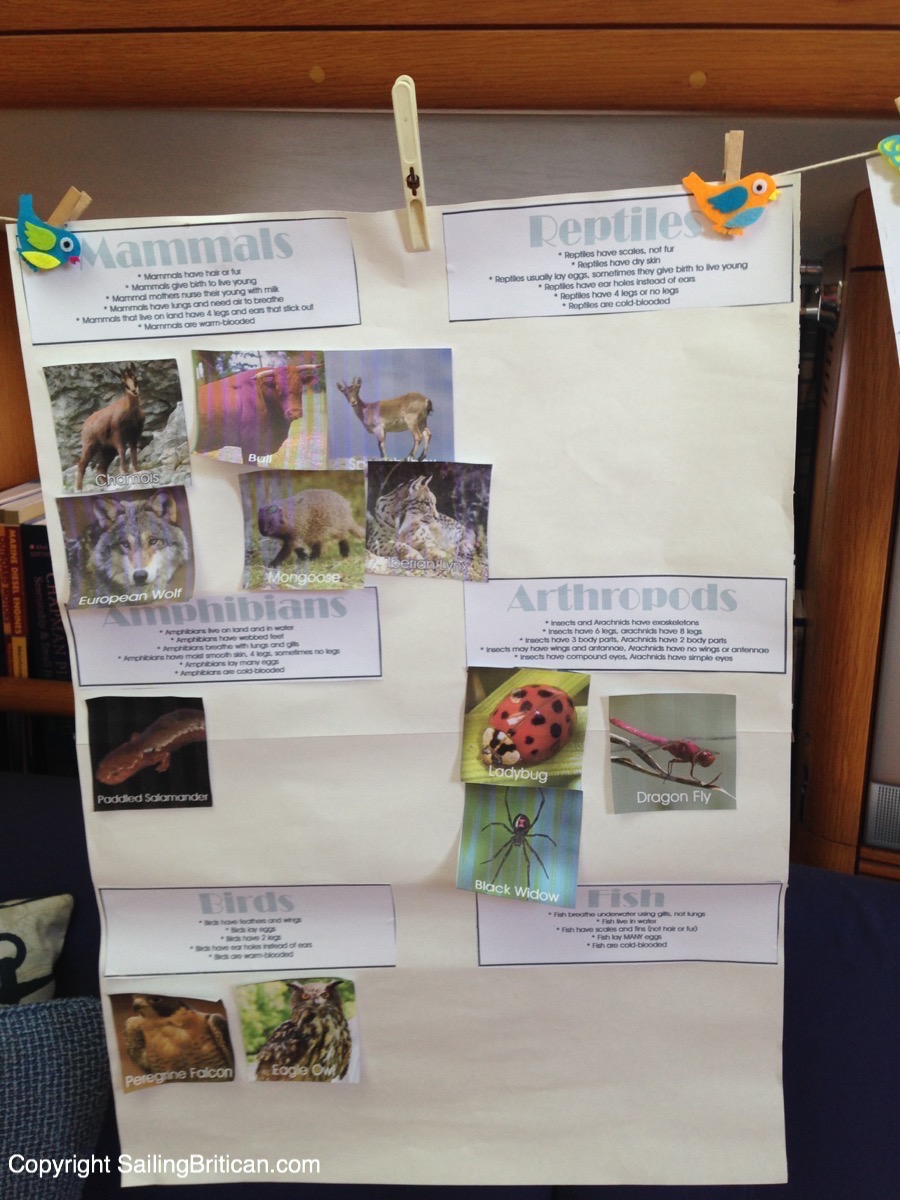
So Monday through Friday we try our best to do the lesson after breakfast. When we’re sailing, I fit it in only if the boat is steady. Often I’m too seasick to teach if we’re in rough weather. And some days we go on an adventure instead. If we miss a day I just make it up on the weekend or we’ll spend a bit longer one day to cover two days of work.
The lessons tend to be spread over two hours with various breaks for snacks, stretching or a swim off the back of the boat.
When we’re not doing lessons, Sienna has an Ipad with several educational apps that she enjoys playing with. We have several books that she can flip through and like any other normal child she spends loads of time playing with her doll house or pirate ship. During sails I often read to Sienna or we play a board game in the cockpit. When we’re anchored we swim and explore on the dingy. And when we’re tied up to a town quay or marina we explore the sights or rent a car and go on an adventure.
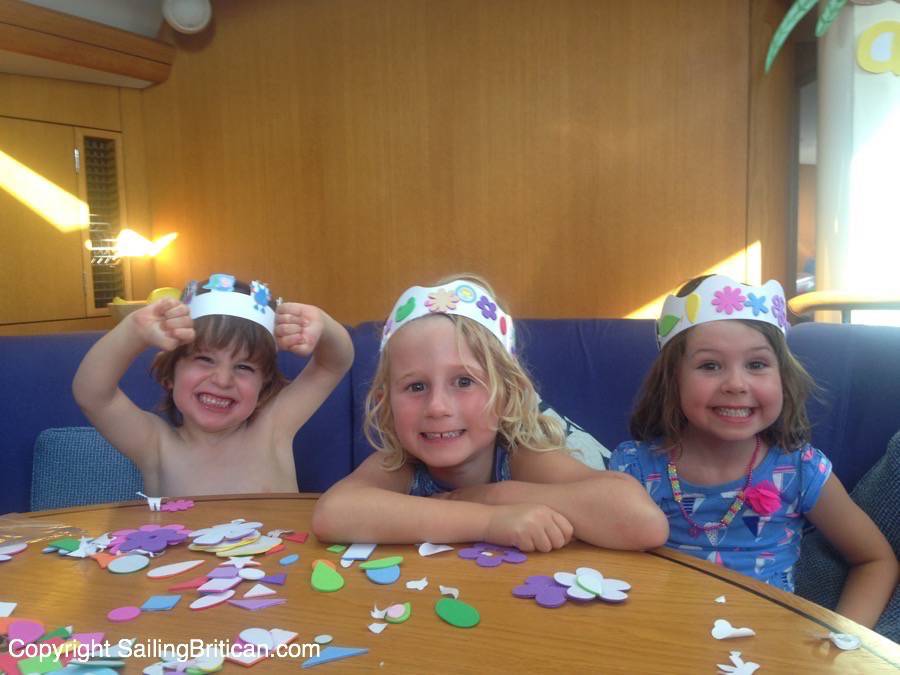
The lovely boat kids from Crackerjack – we met in a bay in Sardinia, Italy
As for social interaction, wherever we go we find other boat kids or local children that are eager to play. It doesn’t matter what language they speak or what age they are, children are all equipped engage in playtime.
So…that’s the latest for me regarding our homeschooling approach. If you have no idea where to start or are looking for module based homeschooling lessons and materials, check out, ‘Confessions of a Homeschooler’ as it’s an invaluable resource.
